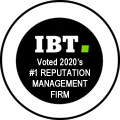How Do You Win at Social?
Bill Slawski, April 26, 2013
Back in 1997 I was a webmaster for a site that incorporated businesses in Delaware. In those days, promoting a site meant finding ways to deliver traffic to its pages, and building relationships with other site owners and businesses. PageRank was unheard of at the time, and the idea of anchor text being used as a relevance signal for web pages wasn't anything we were concerned with at all.
Being included in directories was one way of being found, and finding complimentary businesses who we might share referrals with was a great way to cross promote a site, as long as you felt you could trust your visitors with the owners of that other site. We didn't have social media sites like Twitter or Facebook or Google Plus, but the internet had been a pretty social place even before the Web came about, with newsgroups and Bulletin Board Services (BBS) providing a way for people to meet and interact. Forums provided similar chances to be social in the 90s.
I remember adding a link to a Polish Classified Ads site - written in both English and Polish. Honestly, I didn't expect any response at all from it. I had found it, and it looked like people might be using it, but would there actually be any interest from people in the region in creating Delaware corporations. If I judged it by the standards of a world pre-occupied with SEO, I probably would have passed.
It didn't leave me a chance to provide a live link so it wouldn't have passed along any PageRank or anchor text relevance.
The audience was business people, but it wasn't topically inclined towards people creating new businesses. I created a classified with address and phone number (the owner of the site liked talking to people on the phone rather than responding to inquiries by email), and left it there, and didn't think about it again.
We started getting phone calls from Eastern Europe. Not a lot of calls, but they were interesting. Financial services companies from countries that were little known in the United States were working with clients that wanted to ship goods across the world, and wanted to incorporate each voyage, to limit their liability from other journeys.
The little classified advertisement I left on the Polish site lead to enough business to sustain the incorporation company for its first few years of business, all for the sake of getting cargo containers filled with commodities like olive oil from one side of the Atlantic to the other.
I recalled that link, the phone calls in response, and the business that it lead to because it reminded me of a time when the Web was more social.
Regardless of the lack of sites like Twitter, we built pages to answer questions, to offer goods and services, and to provide information to people. We weren't concerned about how highly a site might rank in search results, or even what search results were. I think sometimes sites today forget about that social element of the Web, and worry more about where they might rank for some main terms, and how much traffic their products and part numbers might draw through web searches.
Social isn't just about including sharing buttons and profile buttons on your pages to Twitter and Facebook and Google Plus, though those are a good start these days. Make it as easy as possible for people to find your profiles on those sites, and for them to share something you've written. Social isn't just about making sure that you use avatars and images and backgrounds on social sites and profiles, though that can help as well.
Social is about what you contribute to social sites and how you interact with others.
Social is about building relationships with others, and taking the time to meet people, to talk with them, to find common interests and objectives.
Social networking sites are channels that enable to you find others, to educate and be educated, to influence, and to be influenced. There should be a thrill of discovery when you log into Twitter, and have a chance to learn something new.
Social media isn't a broadcast channel where you blast out offers to others, and tweet and retweet things you think "your" audience might be interested in.
The "social" in social media and social networking is the most important part of being involved.
When I put the classified out there on the Polish website all those years ago, I was inviting conversations with others who might be interested in what we offered. It was a first step, and the phone number I provided was to someone who loved to talk, to educate, and to learn about others, and how they could work together. Being listed there in terms of today's SEO might have revealed it to have very little value, but in social terms, it was the right place to be listed at the right time by people who needed the service offered.
Social Signals Today
Social media is being incorporated into both Google and Bing these days with social annotations appearing in searches from both. When you're signed into Google and perform a search, it's quite possible that you may see relevant results that appear because someone you're connected to might have shared something from a site or endorsed it. When you perform searches at Bing, you may see similar results with annotations from people you're connected to, that wouldn't have appeared in those results (even though they are relevant) without those connections being made.
If you run a business and have a website, one of the reasons to get involved in Facebook and Twitter and Google Plus is to connect with people on those sites that might be interested in what you offer, and in what interests you may have.
Social networks enable you to reach out across your neighborhood and across the globe to find people who share common interests with you.
A lot of people are writing about Google Authorship Markup these days, and how Google might introduce Agent Rank, or an author rank, that might influence organic search results even when someone isn't logged into a Google Account. Google hasn't explicitly provided us with details on how they might rank such results, but there are a lot of hints that have come out via patent filings and white papers and even interviews that people have held with representatives from Google.
In January, I wrote a post titled, What's Your Google Viral Score? about a patent from Google that describes how Google might come up with a viral score, or “content propagation likelihood" score that attempts to estimate how information might be spread by someone within social networks based upon activity such as sharing, responding to comments and threads, endorsing content, liking pages and profiles, and so on. Such a score might attract advertisers to choose a particular member of a social network to share something with them.
Signals Involving Activity and Influence
In 2010, Google published a whitepaper titled AdHeat: An Influence-based Diffusion Model for Propagating Hints to Match Ads (pdf), to be presented at the WWW 2010 Conference held in Raleigh, North Carolina (and it was a Best Paper Nominee at the Conference). Yesterday, Google published a patent application based upon the paper which provides some additional details about how an advertising system like the Adheat system might be set up on a social network such as Google Plus. The patent is:
AdHeat Advertisement Model for Social Network
Invented by Dong Zhang and Edward Y. Chang
Assigned to Google Inc.
US Patent Application 20130103503
Published April 25, 2013
Filed: September 14, 2012
Abstract
In one implementation, a computer-implemented method includes receiving at a server information indicating activity levels of users of a computer-implemented social network or acquaintance relationships of the users on the computer-implemented social network. The method further includes generating by the server influence scores for the users based on the received information.
The method also includes recursively propagating by the server an ad through the computer-implemented social network between users having an acquaintance relationship by transmitting the ad from a propagating user to a recipient user when a difference between a first influence score of the propagating user and a second influence score of the recipient user is greater than a threshold.
According to the paper on Adheat, this advertising method was tested on Google's Q&A websites throughout the world. Google doesn't have a Q&A site in the United States, but they do in many other countries across the Globe. Those sites are very social in nature, and participants' reputations and results are ranked on the basis of a user rank that looks at both contributions and interactions they make to the sites.
One of the interesting things about this user rank is that it would translate over very well to Google Plus, and a system like Agent Rank, which could potentially be used to help rank web search results based upon user activities with the social network.
We don't know if Google will ever run advertising on Google Plus, and it's possible that they might not, but that they might look at Google Plus activity for people, and use that information to show people ads in Google search results and on pages that carry Google sponsored results.
At the heart of such an advertising method is how people might be decided upon by advertisers to show ads to, and how those ads might be spread to others as well:
In some instances, a method and system is described by which an advertiser can target ads to users of a social network according to a user's interests and influence on the social network. An opportunity to display an ad to an influential user with interests relevant to the ad may be more valuable to an advertiser than an opportunity to display an ad to a non-influential user with unrelated interests (or even a non-influential user with related interests). A user's influence on a social network may be determined by looking at the user's level of activity and/or acquaintance relationships on the social network. An advertiser may receive a ranked list of anonymous users according to user interest and influence. A bidding mechanism may be used to accommodate multiple advertisers seeking to obtain the opportunity to display ads to a finite number of relevant, influential users on a social network.
In some instances, once an opportunity to display an ad to a specific anonymous user has been awarded to an advertiser, an ad from the advertiser may be propagated from the user to the user's friends using a heat diffusion model. For instance, a user's influence on the social network can be represented as a heat intensity or a heat score, where users with more influence have a higher heat score. Propagation between users can then be modeled using a heat diffusion model. For example, an ad may spread (propagate) between two connected users as long as the user targeted with the ad has greater "heat" than the user yet to be targeted. This may result in ads propagating throughout the social network from more influential users to less influential users. One advantage that may be gained from the described method is the ability of advertisers to maximize advertising efficiency by propagating ads from influential users to influenced users.
Take Aways
The patent filing and the paper on Adheat do provide more information on how social activities and interactions might influence the spread of advertisements based upon user interests and user influence. They also provide hints at how Google might be viewing participants in a social network such as Google Plus. These can include who you interact with, what topics do you write about and respond to, how you interact with others, who shares the content that you create and share and respond to.
Google Plus cares little about a link graph, and more about an interest graph that is uncovered based upon the topics that you are involved within, a social graph that identifies who you interact with and whom you might influence and be influenced by. That's not to say that profile and post pages in Google Plus don't accumulate PageRank and might show up in search results themselves. They are pages that can be ranked that way like other indexable pages on the Web. But that's just a small part of the picture.
We've been told by representives from Google that Google Authorship and social signals will likely become part of how pages are ranked on the Web at some point in the future, and it's something that the search engine is experimenting with.
As my story at the beginning of this post illustrates though, social activity can lead to good things regardless of whether a search engine is working upon how to incorporate those signals into search results.
Make it easy for people to interact with you and your website through social sites and profile buttons and social sharing buttons and get on those social sites and actually interact with people in meaningful ways. It can lead to positive results regardless of how it might be incorporated into search engine rankings in the future.





